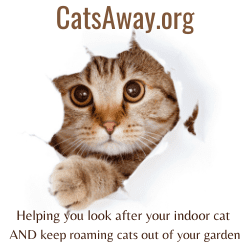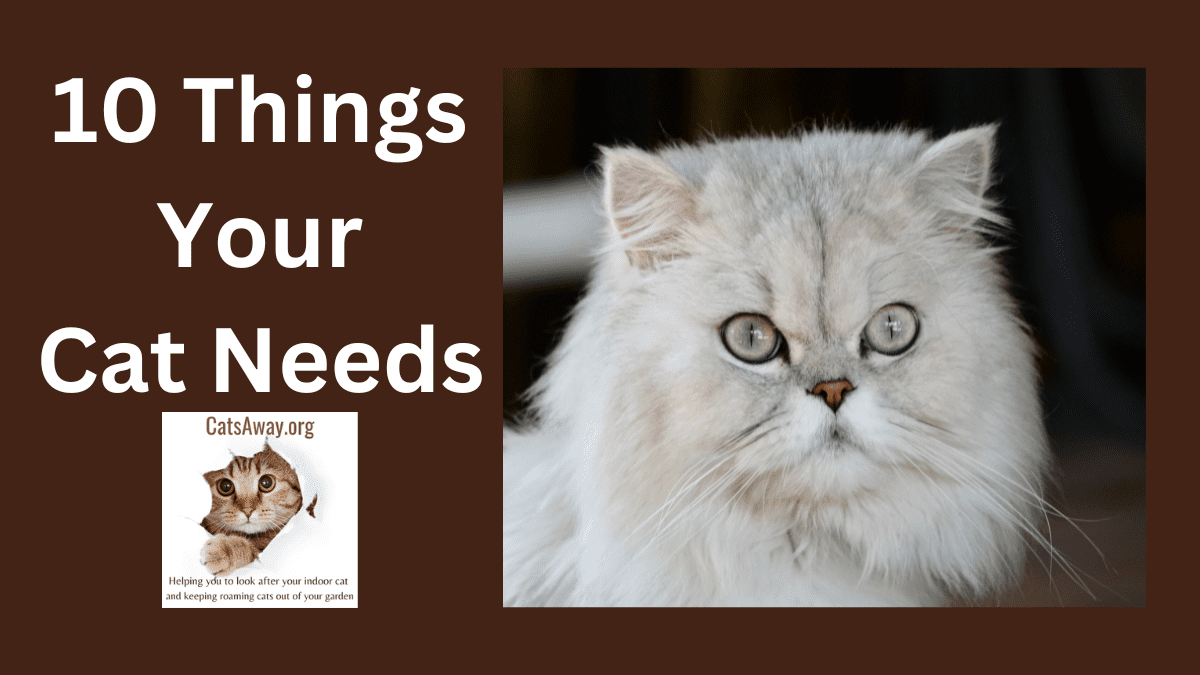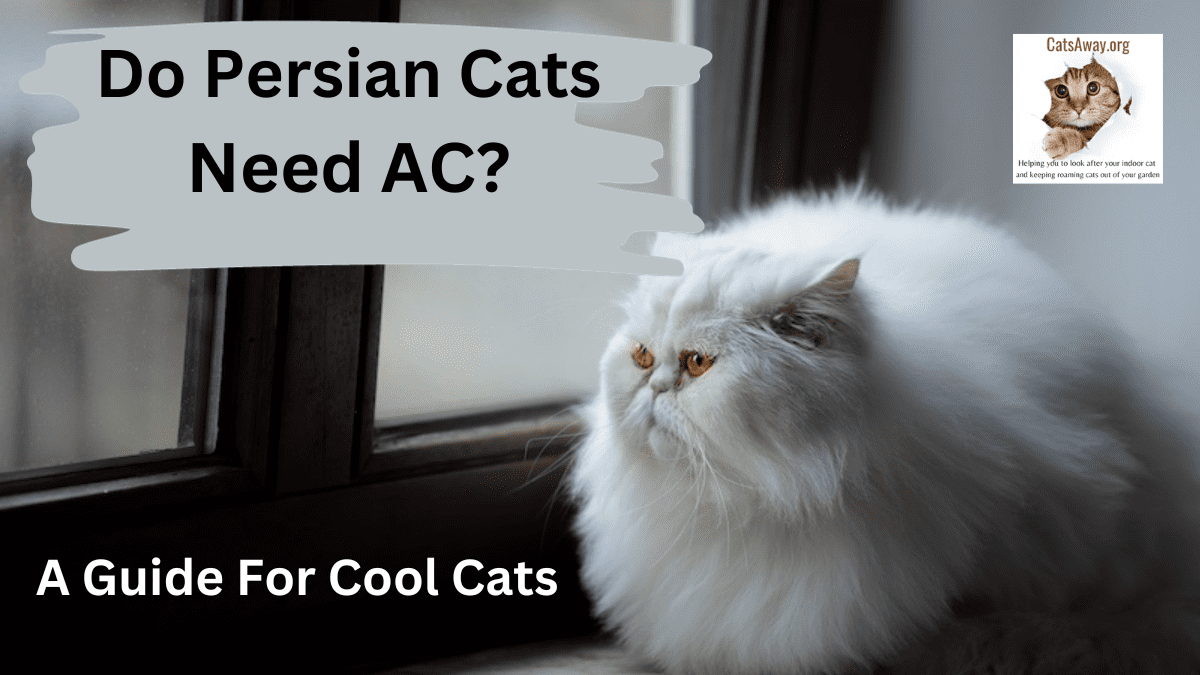My indoor cat is obsessed with going outside and I’m sure plenty of other pet owners can relate as many indoor cats go through this phase. How do you manage a pet with a strong desire to go outside? Is it safe to let indoor only cats roam free occasionally or should you keep your cat indoors?
Here I’ll discuss why some cats are so desperate for the outside world as well as training techniques that can help prevent an outdoor-obsessed kitty from wanting to leave the safety of home.
Understanding Why Your Cat Wants to Go Outside
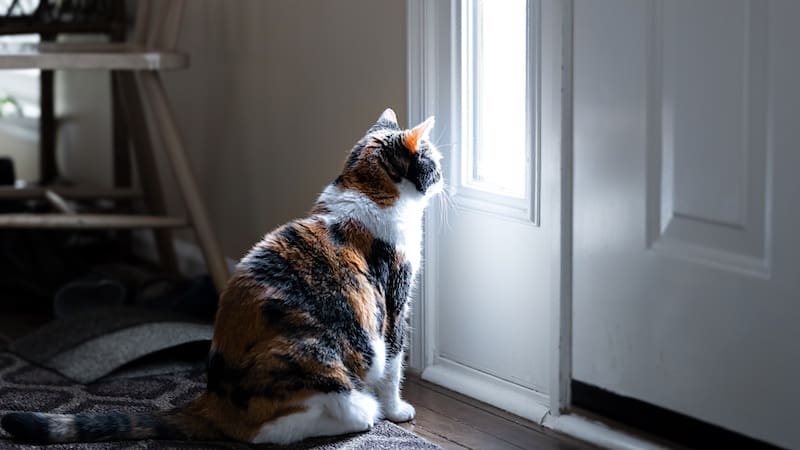
Cats have a natural instinct to explore and roam. It is part of their genetic makeup, so it’s no surprise that they want to go outside. As pet owners, we should be conscious of the motivations cats may have for going out and any possible risks that come with it.
The Natural Instincts of Cats:
The urge for exploration and hunting is hardwired into cats’ brains. They are naturally curious animals who enjoy investigating new sights, smells, and sounds in their environment. This innate curiosity can lead them away from home if given the opportunity.
Common Reasons cat want an outdoor life:
There are many reasons why your cat may be tempted to go outside. Some cats simply love fresh air while others may find comfort in being able to escape from loud noises inside or seek out solitude when stressed or overwhelmed indoors.
Most though are looking to either mate, hunt or both.
Natural Hunters:

Cats are natural hunters and there are over 58 million (source) of them in the United States. Of those, most cats are still allowed to go outside and roam freely.
Those free roaming cats are responsible for 2.4 BILLION birds killed each year in America and every outdoor cat plays its part. (source).
Mating:
Spayed females in a study of 460,000 cats lived 39% longer than those that hadn’t been spayed and neutered male cats lived 62% longer than those who hadn’t.
The reduced lifespan of unfixed cats can, in part, be attributed to an increased urge to roam. Such roaming can expose them to fights with other cats and animals, resulting in injuries and infections, trauma from vehicle strikes and other accidental mishaps.
Source
Like all animals, cats have a genetic urge to mate so if you haven’t had your cat spayed or neutered there’s a good chance that this is one of the main reasons your cat is obsessed with getting out.
Recap: Cats have an innate desire to explore, hunt and mate which can lead them into potentially dangerous situations if you give in to a cat obsessed with the outdoor life.
As a pet owner, you need to comprehend why many cats want to go outside and then make a conscious decision as to whether you want to keep your cat indoors where they can live longer and healthier lives or let your cat outside regardless of the many dangers.
The Dangers Awaiting an Outdoor Cat
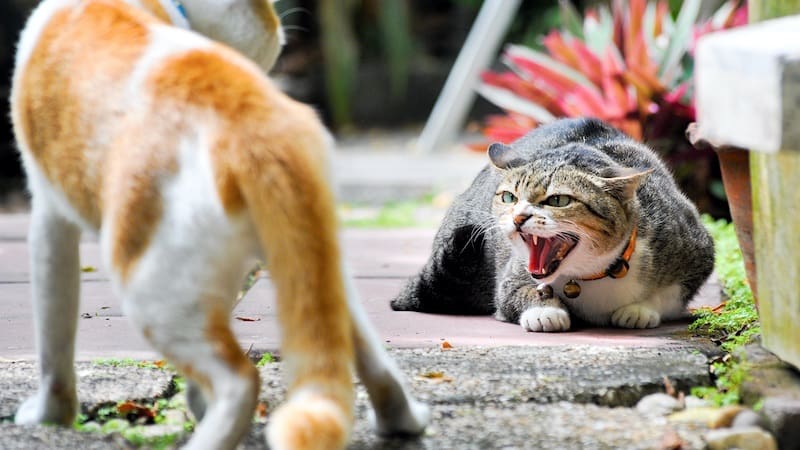
Outdoor cats are a popular pet choice for many households. Just put some food out now and again, leave him an open door and your kitty can go outside to play, make new friends, leave cat poop on your neighbors lawn every evening etc.
However, apart from upsetting your neighbors there are very real risks that come with having an outdoor cat.
When allowing a cat to travel past your garden borders, it’s important to understand what threats may be lurking nearby. Domestic cats can become victims of animal cruelty, attacks from other animals (including other cats) or car accidents.
Additionally, they can be exposed to parasites such as fleas and ticks which could cause serious health issues in felines if left untreated as well as territorial fights with other cats.
Bite wounds from another cat are the main way contagious diseases such as feline immunodeficiency virus (FIV) and Feline Leukemia Virus (FeLV) are transmitted.
Always remember that the life expectancy for house cats is 12 to 15 years while for a cat allowed to go outside and roam free it is just 2 to 5 years and there’s a reason for that, an indoor cat is a safe cat.
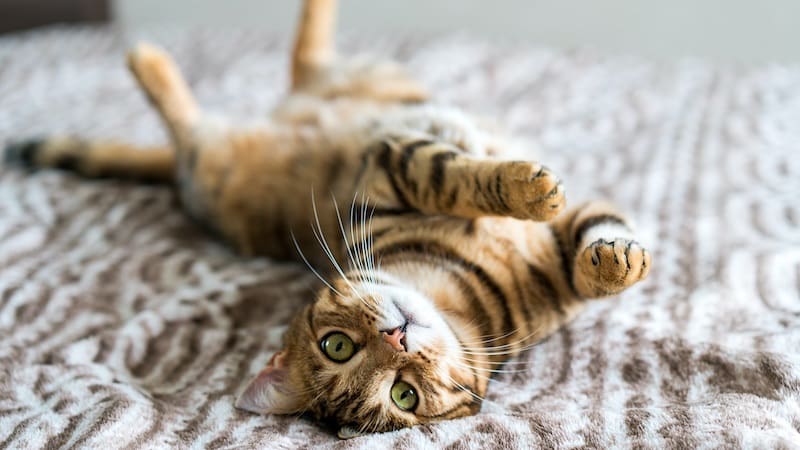
Training Techniques to Prevent an Indoor Cat from Wanting to Go Out
PRT
Positive Reinforcement Training (PRT) is an effective way to train your cat not to want to go outdoors. This technique involves rewarding the desired behavior with treats, praise, and affection.
If your cat approaches the door and refrains from leaving when you open it, give them a reward such as a treat or some loving attention. By providing this training, cats can learn to comprehend that it is more advantageous to remain inside than venture out.
Clicker Training
Clicker training can also be used in conjunction with PRT for cats who are particularly stubborn about wanting to go out. Utilizing clicker training entails employing a hand-held device which emits a clicking sound when activated.
Every time your cat performs the desired behavior (in this case staying indoors), press the clicker and give them a treat as reward.
Mental Stimulation
Instead of focusing on preventing them from leaving, focus instead on providing activities that keep their minds occupied while indoors such as building them a cat house from cardboard boxes, playing interactive games or providing a cat tree and a cat exercise wheel and other toys around the house that encourage physical activity and mental stimulation.
Additionally, giving your cat access to window sills so they can observe birds or watch people pass by can help satisfy their natural urge for exploration without putting them at risk of harm outdoors.
By redirecting their attention away from escaping through a door or window and towards engaging activities within your home environment, you will be able to create an enjoyable life indoors for both you and your feline friend.
Alternatives to Letting Your Cat Roam Free
Many cat owners struggle to comprehend why their beloved kitty desires to explore the outdoors. After all, cats can live long and healthy lives indoors with plenty of stimulation and access to the great outdoors via a window perch or a screened porch.
However, sometimes a cat’s desire leads them outside despite the potential dangers from wild animals, cars, animal cruelty, and other risks.
Allowing them some fresh air though isn’t the worst idea and there are alternatives for responsible cat owners who want to give their cats some outdoor time without letting them roam free as outdoor cats.
Garden Cat Enclosure

A large cat enclosure for your garden can provide a secure way to let cats that stay indoors during the night explore the outside during the day. A cat enclosure ensures they get enough exercise and play as well as keeping them safe from potential contagious diseases and other animals whilst at the same time protecting the birds visiting your garden.
Cats love these enclosures as they typically include multiple levels with platforms connected by ramps and bridges so your cat can climb around in a secure environment while still getting fresh air and sunshine.
Cat trees placed inside these enclosures also provide extra stimulation as well as hiding spots for your cat to rest if they get overwhelmed by too much activity going on around them.
Cat Proof Fencing

Cat proof fencing is another option that allows your cat access into your yard but keeps out unwanted visitors like neighborhood cats and dogs. This type of fence is made of composite or wood that’s strong and tall enough not only to stop cats, next doors dog and any other animals getting into your garden but also giving you peace of mind knowing your cat can’t get out is safe.
Cat Leash
Finally, more and more I’m receiving mail from cat parents who have had success leash training their cat. This is another alternative for those looking for ways to let their indoor-only pets experience life outside without actually roaming freely in unfamiliar territory.
Recap: Cats that have an instinctive behavior to go outside can enjoy the outdoors safely with large garden cat enclosures, cat proof fencing, and leash training. By providing these alternatives cat owners will give their furry friends access to fresh air and sunshine without any of the risks associated with roaming freely in unfamiliar territory.
Caring for your Indoor Cat
Caring for indoor cats is essential to ensure their health and wellbeing. Providing mental stimulation and exercise indoors is key to keeping cats fit and happy, as it allows them to explore the environment around them without leaving the safety of their home.
There are a variety of ways to do this, such as investing in cat trees or towers that give cats access to higher places, providing interactive toys like laser pointers or feather wands for playtime, and offering scratching posts so they can indulge in their instinctive behavior.
Ensuring adequate nutrition and hydration is also important when caring for indoor cats. Cats require specific nutrients that are found in commercial diets formulated specifically for cats.
Additionally, cats need plenty of fresh water available at all times; cat owners should fill multiple bowls throughout the house with clean water each day so their feline friend has easy access no matter where they go inside the home.
Regular vet visits for their checkups and annual shots is essential, even for indoor cats just in case they manage to get out and lost. Your indoor cat should always wear a collar with ID tags for the same reason.
Recap: Caring for indoor cats requires providing stimulating toys and activities, as well as ensuring they have access to the right nutrition and hydration. Investing in items like scratching posts or interactive toys can help keep cats happy indoors, while making sure fresh water is always available will ensure your feline friend stays healthy and content.
Conclusion
It is important to understand why your cat may be obsessed with going outside and then consider your cats safety before deciding whether to let him roam free or not.
Training techniques such as positive reinforcement can help prevent an indoor cat from wanting to go out. Alternatives like outdoor cat enclosures, cat proof fencing or taking a cat out on a leash may all be an additional cost but most cats will be happy with these as a compromise.
Caring for an indoor pet requires time and dedication but it can provide both you and your furry friend with many years of companionship if done correctly.
